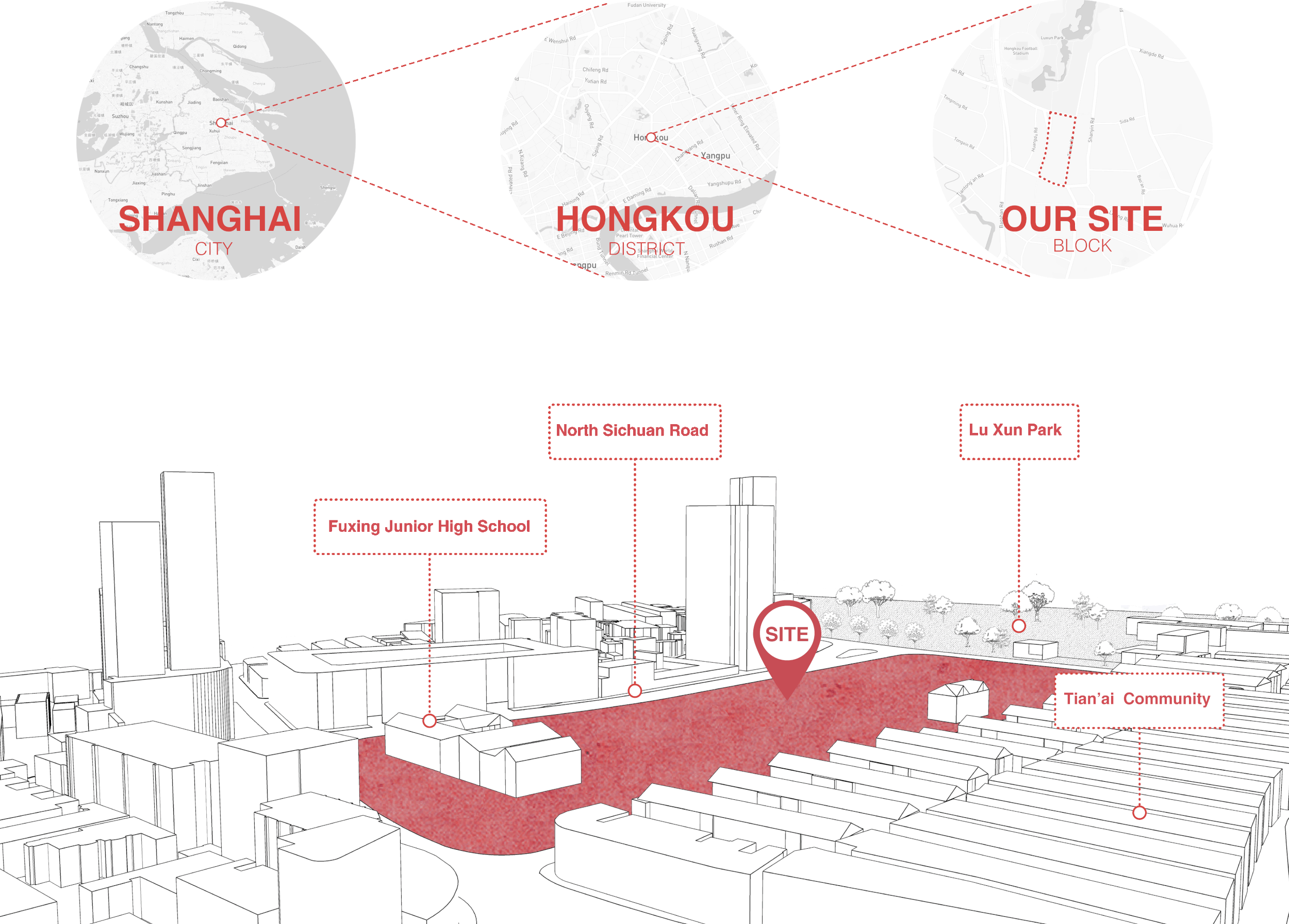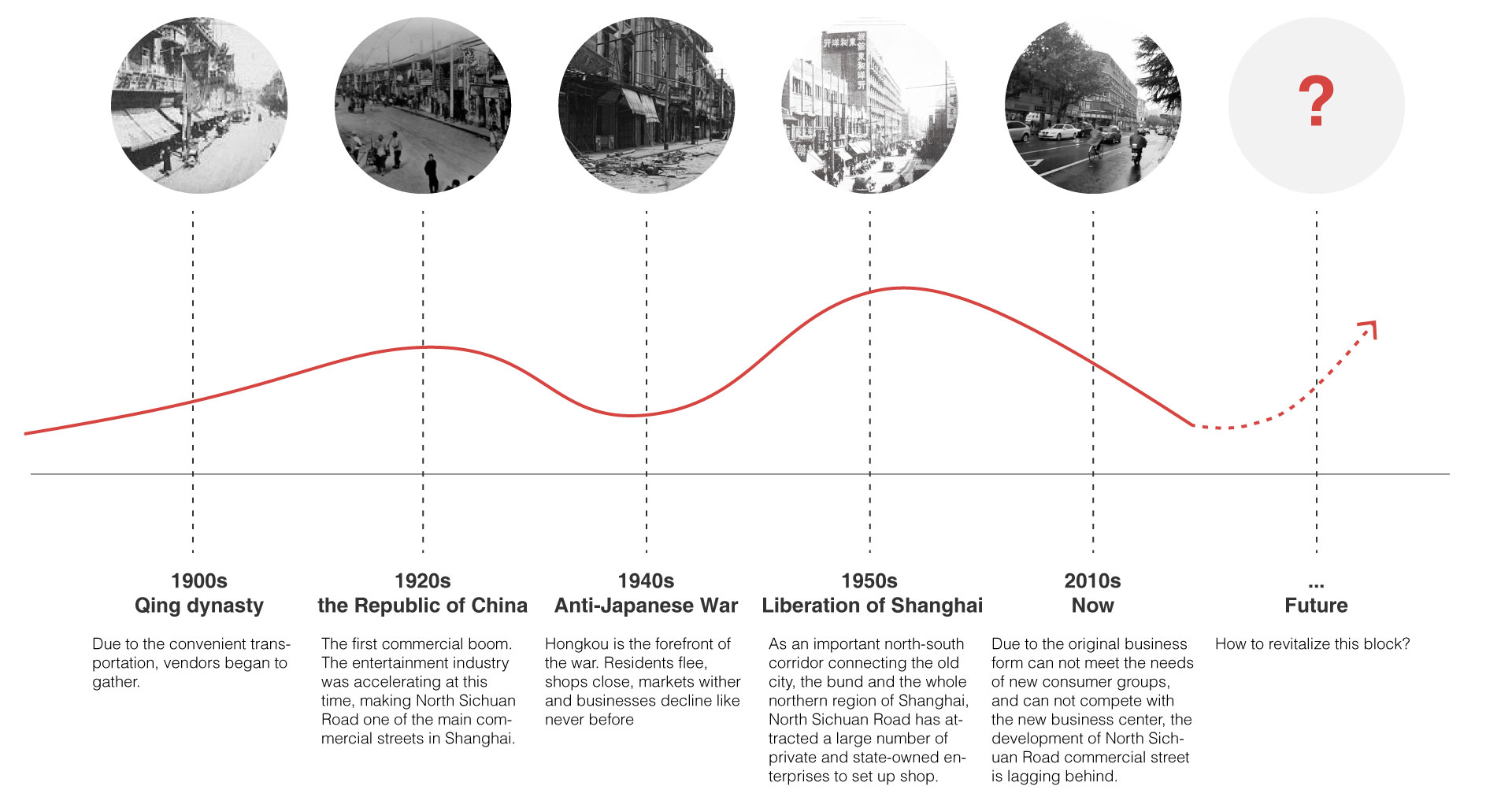 “Architecture has a responsibility to community. It should serve a common ethos.” — The Ethical Function of Architecture, 1997
“Architecture has a responsibility to community. It should serve a common ethos.” — The Ethical Function of Architecture, 1997
Urban Complex
- Course project in Architectural Design at Tongji University
- Date: Mar 2018 - Jun 2018
- Collaborated with Luwen ZHANG
- My contribution: Site Analysis, Stakeholder Analysis, Ideation, Development, Visualization
Our site is located in the Honkou District, which used to be one of the most prosperous commercial districts in Shanghai. However, due to economic transition and the development of new business models, this region has been decaying. We analyzed the interest game of different social groups concerning public space. In order to revitalize this district, we sought to reinvigorate the block through commercial complex design.
Site Analysis
What’s the current situation of our site?
Let’s take a close look at the site before masterminding the integration of the new building into it.

What’s the story behind it?
In the 1900s, North Sichuan Road was one of the most prosperous commercial streets in Shanghai. However, in the last decade, the commercial vitality of North Sichuan Road has declined rapidly.

Stakeholders
Behind the complex urban environment of the base is the game of interests among all parties. Through observation, interviews, and case studies, we gradually clarified the outline of the interest relationships behind the design of a new urban complex.

The most important stakeholders are the government, developers, customers, office workers, and residents. All parties have their views on the construction of the new complex. We analyzed their potential and their appeal and began to think about how to enable the design to play a more significant role and create greater value.
Ideation
Concept
Although we cannot assume that all expectations are equal, particularly when multiple stakeholders are involved, mutual benefit is the inevitable outcome in the long run.
As designers, we hope to improve our living environment and serve more people. Through previous analysis, we realize that stimulating the vitality of the site and increasing business efficiency can maximize the interests of all parties. We need to create a more vibrant urban public space.
Strategy

Output

Lessons & Future
The design of the urban complex has given me an excellent opportunity to understand the complex world behind the drawings. Due to the complexity and contradictions of the city itself, we focused on the game and balance in this design. Whether it’s the collision between the old and the new around the site or the interests of all parties involved behind it, the development of things will always be driven by multi-integration, compromise, and re-creation. What’s more, the game is not always measured tit for tat, and balance is not simply the average of interests. Also, we should study the process more during the design. Every form of the city is in the process, not the ultimate state.
